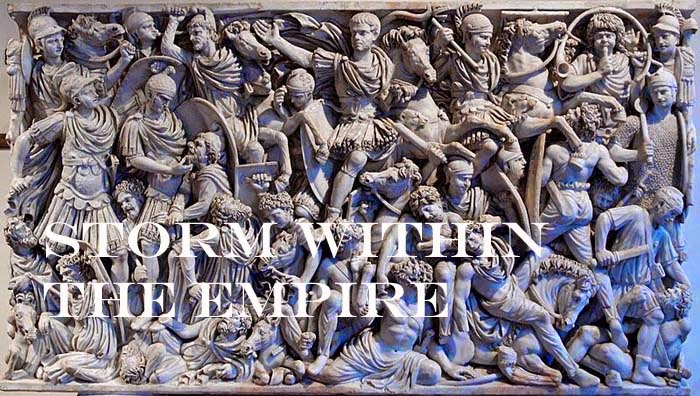The Battle of Issus was the third and final engagement
between the forces of Septimius Severus and the usurper Pescennius Niger. In
the year 193 AD, Pescennius Niger then governor of Syria claimed the title of
emperor and rallied the eastern legions to support his claim.
Septimius Severus with the support of the Danube
Legions entered Rome and secured his position there. Gathering a force from the
Danube provinces he crossed the Dardanelles to meet Niger at Cyzicus and again
at Nicaea. Twice defeated, Niger withdrew intact to the Taurus Mountains.
Holding the forces of Severus at bay in the Taurus, Niger realized his situation was tenuous as support for his claim to
the throne was slowly eroding; a number of cities in the east changed their loyalties, Egypt declared for Severus and the IV Ferrata deserted to the Severan camp.
Niger departed the Taurus position to consolidate what remained of his power base at Antioch. Near Antioch, on the field were Alexander defeated Darius III, Niger met Cornelius Anullinus at Issus (May 194 AD).
Niger departed the Taurus position to consolidate what remained of his power base at Antioch. Near Antioch, on the field were Alexander defeated Darius III, Niger met Cornelius Anullinus at Issus (May 194 AD).
The
Armies
We know that S.
Severus had gathered 16 legions to campaign against Niger’s Syrian legions
totaling no more than six. From Cassius Dio we learn that one legion had declared
for Severus and defected during the spring of 194 and that Severus was occupied
with the siege of Byzantium.
For our test game, we have given the Middle Imperial
Romans of Anullinus three standard commands and modified those of Niger’s army by reducing number of blade and filling the difference with
auxilia and mounted troops. The final composition of forces is listed below.
Commander
Cornelius Anullinus
9 x Cv, 3 x LH, 12 x Bd, 12 x Aux.
Commander
Pescennius Niger
7 x Cv, 5 x LH, 9 x Bd, 15 x Aux.
The
Battlefield.
The coordinates of the battlefield given at Wiki show
a relatively flat area within the modern city of Dörtyol. An outnumbered Niger
may well have remembered Alexander’s victory at Issus and sought a similar
position behind the Pinarus River. In such a position his left flank would rest on the Gulf of
Issus while the right flank could make use of the higher ground against the
troops of Anullinus.
See Livius.org for photos of the battle area.
The terrain set up will mirror the battlefield of 333 BC. Niger's position is south of the Pinarus River with Anullinus deploying on the opposite bank.
The terrain set up will mirror the battlefield of 333 BC. Niger's position is south of the Pinarus River with Anullinus deploying on the opposite bank.


No comments:
Post a Comment